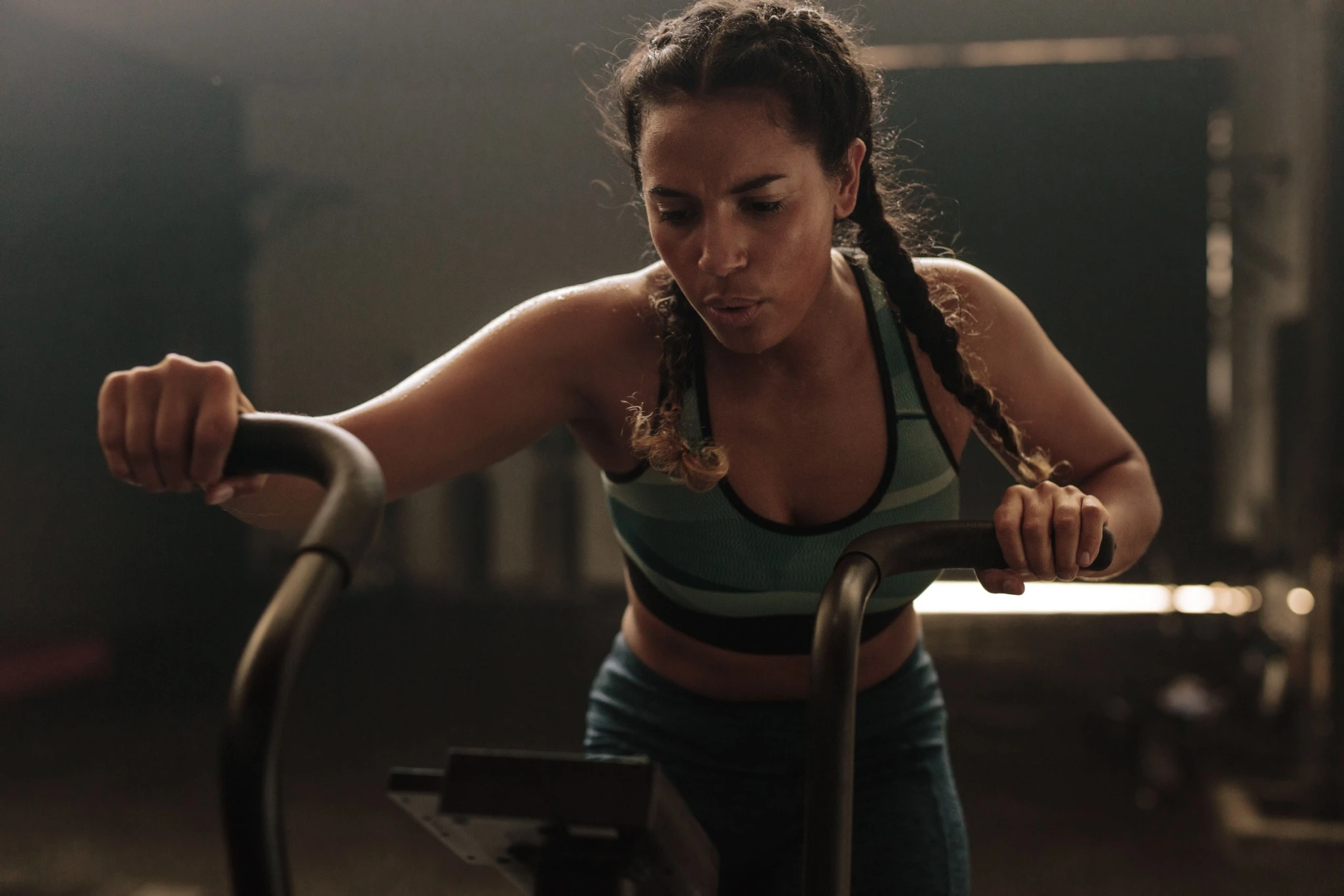Breathe Better, Train Stronger: How to Boost Your VO₂ Max
VO₂ max is a powerful measure of your aerobic fitness, yet many women overlook it in their training. Here’s why it matters and how to boost it.

October 30, 2025 - Updated October 30, 2025

One of the most popular workout routines for women right now is a combination of strength training and LISS. You’re lifting weights multiple times a week, and then complementing that with low-intensity cardio like walking.
The result? More muscle mass, strength and endurance, better bone density, longevity and mental health, plus you’re working on your base fitness and cardiovascular system without significantly increasing your cortisol levels… Amazing. There's a lot to love. But there’s also one health metric that often gets missed from this equation, and that’s your VO₂ max.
Understanding it and working to improve it can unlock better endurance, more energy, and even long-term health benefits.
What is VO₂ max?
TLDR: The quick version
VO₂ max, or maximal oxygen uptake, is the maximum amount of oxygen your body can use during intense exercise. Think of it as a measure of how efficiently your heart, lungs, and muscles work together to fuel your workouts. Physiopedia calls it the gold standard of cardio fitness.
The science of it all
Basically, when you breathe, your lungs take in oxygen and send it into your bloodstream. From there, your red blood cells deliver that oxygen to your muscles and organs. Your muscles use that oxygen to create energy to keep you moving. The more oxygen you can take in, the more energy your muscles can make to power your workout. That’s why you start breathing faster when you exercise - your body’s trying to keep up with the increased demand for energy!
If you have a higher VO₂ max, it means your heart and lungs are really good at sending that oxygen-rich blood to your muscles faster, and your muscles are great at using that oxygen for energy.
That’s why a high VO₂ max is a strong sign of good fitness - it shows your body is working efficiently from the inside out, meaning better endurance, quicker recovery, and higher overall performance. You can exercise for longer at higher intensities without feeling tired or out of breath. Hell yes.
Why VO₂ max matters
If you’re someone who loves your routine of weight lifting and walking, you might think you don’t need to care about your VO₂ max, but it’s something everyone should care about, regardless of how you like to train. Here’s why:
Better endurance: A higher VO₂ max lets you sustain effort for longer, whether you’re walking, hiking, running, cycling, or crushing a HIIT session. Even in your weight-lifting sessions, you’ll feel a difference as your recovery time between sets will be better due to a more efficient delivery of oxygen to your muscles.
Better heart health: It’s strongly linked to cardiovascular fitness and reduced risk of heart disease, two things we should all care about regardless of our workout routines.
Better energy and longevity: Whether you’re mid-workout, running to catch the bus or playing with your kids, your body becomes more efficient at using oxygen, giving you more energy and stamina for everyday activities. It’s also a strong predictor of your quality of life as you age, according to Physiopedia and Harvard Health.
Better fitness and overall performance: No matter which way you cut it, your VO₂ max is one of the most reliable markers of your aerobic capacity and overall health.

How to increase VO₂ max
To improve your VO₂ max, you’ve got to get your heart rate pumping. If you’re not feeling super fit to begin with, something like walking is a great place to start.
If you’re already active and looking to improve, you want to challenge your cardio system. Steady-state cardio like walking or jogging is still excellent for building your base, but try adding even just one interval session a week - think running or cycling sprints or a HIIT workout. You’re aiming to go all out for 20-40 seconds at a time, then recover and repeat.
While we don’t recommend HIIT training every day (hello burnout and high cortisol), getting those intense short bursts in each week is incredibly good for your health as they force your cardiovascular system to adapt without overtaxing your body.
You definitely don’t need to follow a HIIT program in the Sweat app - it can be as easy as doing one weekly HIIT session from the On Demand section.
How to measure VO₂ max
Here’s another reason why so many of us forget about VO₂ max: it’s hard to measure.
The most accurate way to measure VO₂ max is in an exercise lab. You’ve probably seen videos of athletes running on a treadmill while wearing a mask and hooked up to a heart rate monitor. Measuring their VO₂ max is precisely what’s going on there.
But there are other ways to measure it. Many fitness watches and health rings now give you measurements (and while research shows they’re not necessarily perfect, they’re close enough or helpful for tracking improvements if you wear them consistently), or you can do manual calculations such as:
15 x (max heart rate/resting heart rate) = VO₂ max
Once you know your number, you can easily find VO₂ max charts online to see where you sit. Charts are different for males and females, so make sure you’re looking at the right one!
Fitter, faster, healthier
VO₂ max isn’t just some fancy term only athletes care about - it’s a key to better endurance, energy, and long-term health. By integrating smart interval training, steady-state cardio, and never skipping your rest days, you can safely and effectively boost your aerobic capacity without stressing out your system.
Next time you look at your weekly workout plan, don’t just ask, “Will this make me stronger?” Ask, “Will this make me stronger and fitter?” Your VO₂ max (and your future self) will be better for it.

Erin is a writer and editor at Sweat with years of experience in women's publishing, the fitness industry, media and tech. She's passionate about the power of movement, and you can often find her on a yoga mat, a hike, a dance floor, in the ocean or the gym.
* Disclaimer: This blog post is not intended to replace the advice of a medical professional. The above information should not be used to diagnose, treat, or prevent any disease or medical condition. Please consult your doctor before making any changes to your diet, sleep methods, daily activity, or fitness routine. Sweat assumes no responsibility for any personal injury or damage sustained by any recommendations, opinions, or advice given in this article.
Fitness